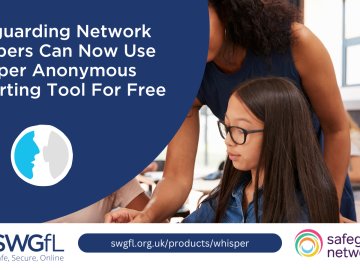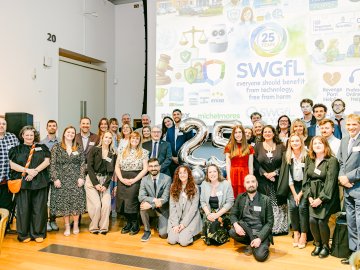New data from the WeProtect Global Alliance Global Threat Assessment 2023 has revealed the extent of online sexual abuse that young people are facing on a daily basis.
The 2023 Assessment reveals that since the 2021 Global Threat Assessment, young people’s internet usage has surged; exposing children to online risks including sexual exploitation and abuse.
Emerging Risks to Children Online
The assessment releases new data revealing that the volume of child sexual abuse has continued to grow online, with an 87% increase in the volume of child sexual abuse material since 2019, according to 2023 data from the National Center for Missing and Exploited Children.
Alongside the rising volume of CSAM content, new forms of abuse have been identified online, with rising cases of financial sexual extortion and AI-generated imagery being seen, alongside concerns around how eXtended Reality (XR) could be used as an opportunity to simulate abuse and engage with minors.
Established forms of abuse were also noted to have grown, with the report highlighting findings by the Internet Watch Foundation that saw a 360% increase in ‘self-generated’ sexual imagery of 7-10-year-olds from 2020 to 2022.
Online grooming trends were also identified within the assessment, highlighting that in social gaming environments, it takes an average of 45 minutes for a high-risk grooming situation to develop. In many cases of online grooming, 60% of perpetrators were known to the victim.
To read more about the 2023 Global Threat Assessment and the latest findings regarding online sexual abuse, you can visit the WeProtect website.
Reporting Online Child Sexual Abuse
For anyone concerned about online child sexual abuse, there are services that can help to report and remove content online.
The Internet Watch Foundation (IWF) helps to remove images of child sexual abuse. If the images or videos are of someone under the age of 18 the IWF can provide advice or you can make a report on their website.
If you are concerned about a child and online sexual abuse or the way someone has been communicating with a child online, you can make a report to the Child Exploitation and Online Protection Command (CEOP).
Responding to a Harmful Sexual Behaviour Incident
Many of these figures will be of great concern to teachers and professionals working with young people, and it is important to be able to identify and support young people who may be being affected by harmful sexual behaviours.
SWGfL, in partnership with the Marie Collins Foundation, has created guidance and resources to support professionals working with children and young people when responding to incidents or issues involving harmful sexual behaviour. The free HSB resources support professionals to respond and put the correct safeguarding measures in place to support young people affected by these incidents. Alongside resources, SWGfL have also developed effective training using expertise sourced from the Harmful Sexual Behaviour Support Service pilot.
Access Harmful Sexual Behaviour Resources
If you have an online safety concern that is not associated with harmful sexual behaviour, you can contact the Professionals Online Safety Helpline for advice.
Creating a Safe Space Online
Children are using the internet more and more, and for many, internet access will be beneficial to their education and general lives. It is therefore important to make sure the appropriate safeguarding procedures are put in place for young people, so that they can stay safe and secure online, helping them to enjoy the more positive aspects of the online world.
SWGfL provides a series of resources to ensure children can make the most of their time online in a safe manner, providing schools and educational settings with the tools to recognise, respond, and address online concerns.
Curriculum support tools such as ProjectEVOLVE can help professionals educate, guide, and support young people as they use technology. ProjectEVOLVE can be used in the classroom to encourage digital literacy, increase online safety knowledge, and advance digital development.
Our anonymous reporting tool, Whisper, can also be introduced within school communities alongside other safeguarding practices to help students, parents, and staff feel comfortable enough to reach out about their concerns and wellbeing in a safe and secure way.
SWGfL has a wide selection of tools and services specifically designed to increase online safety in school environments. Find out more about our products on our website.
Online Safety for Schools | SWGfL
With all technology, there are distinct negatives and positives, and we encourage support to be put in place and concerns to be responded to in the most effective manner to ensure that children and young people can experience online technology away from detrimental harm.






